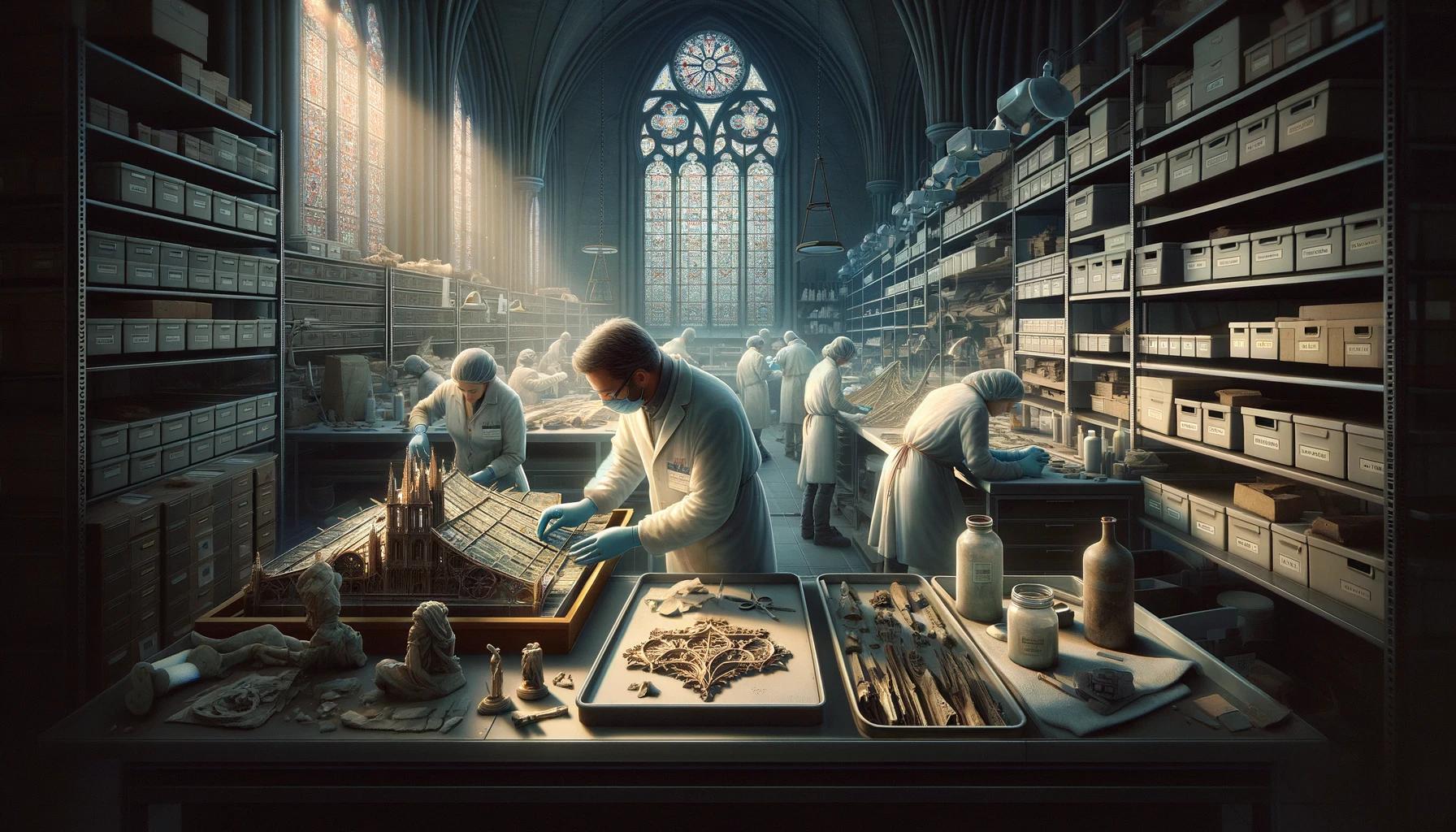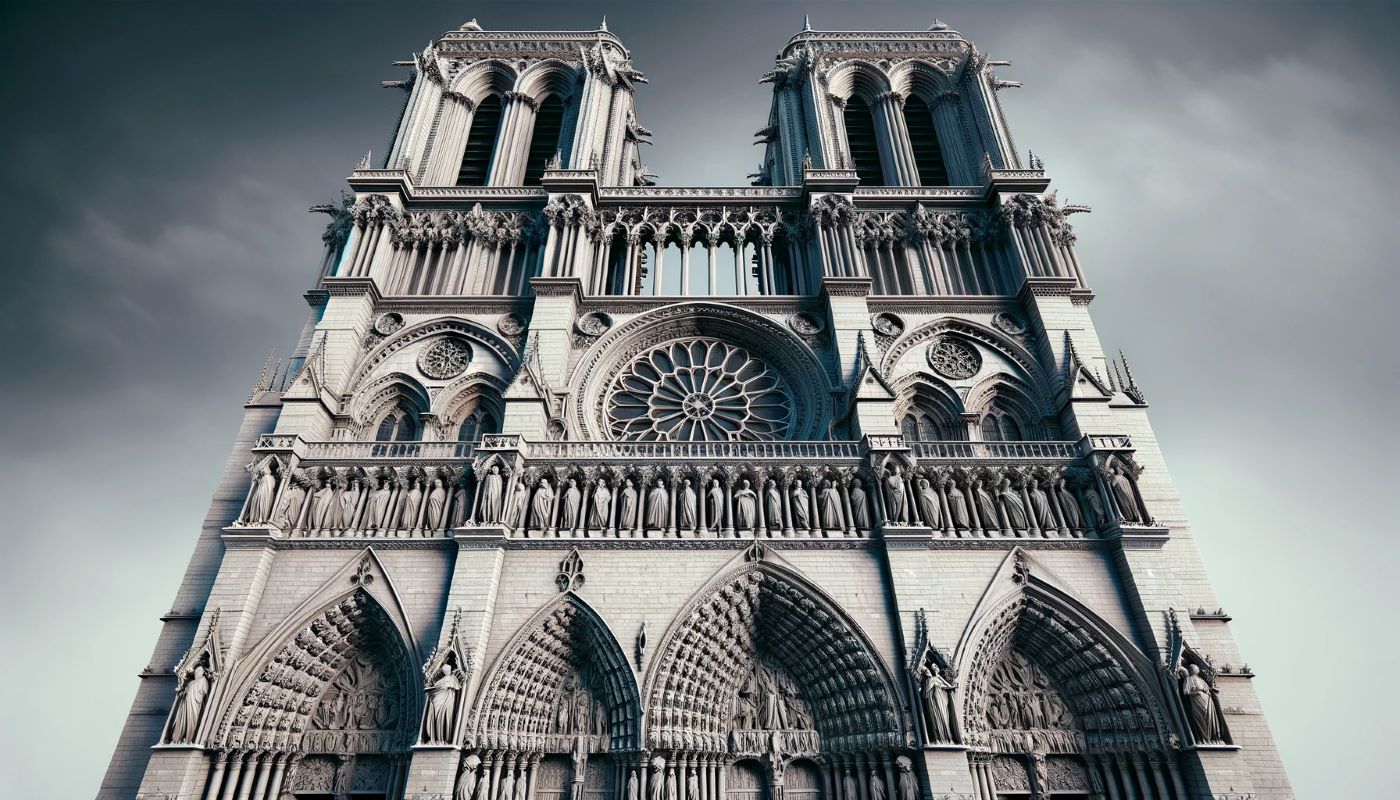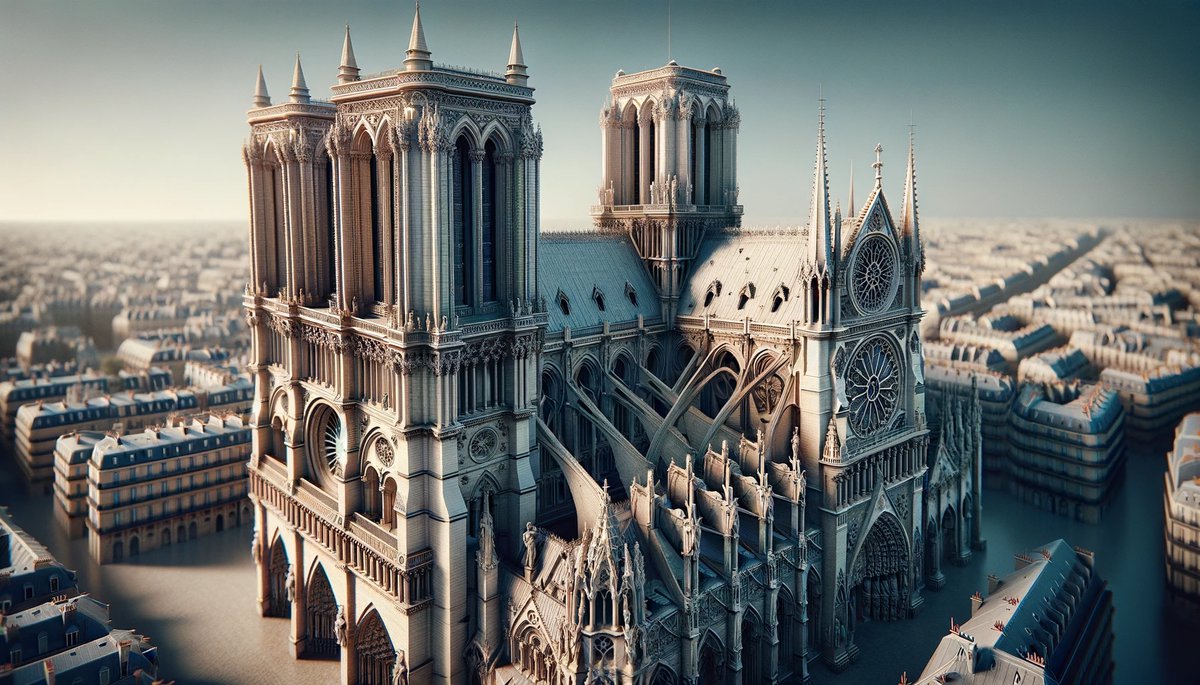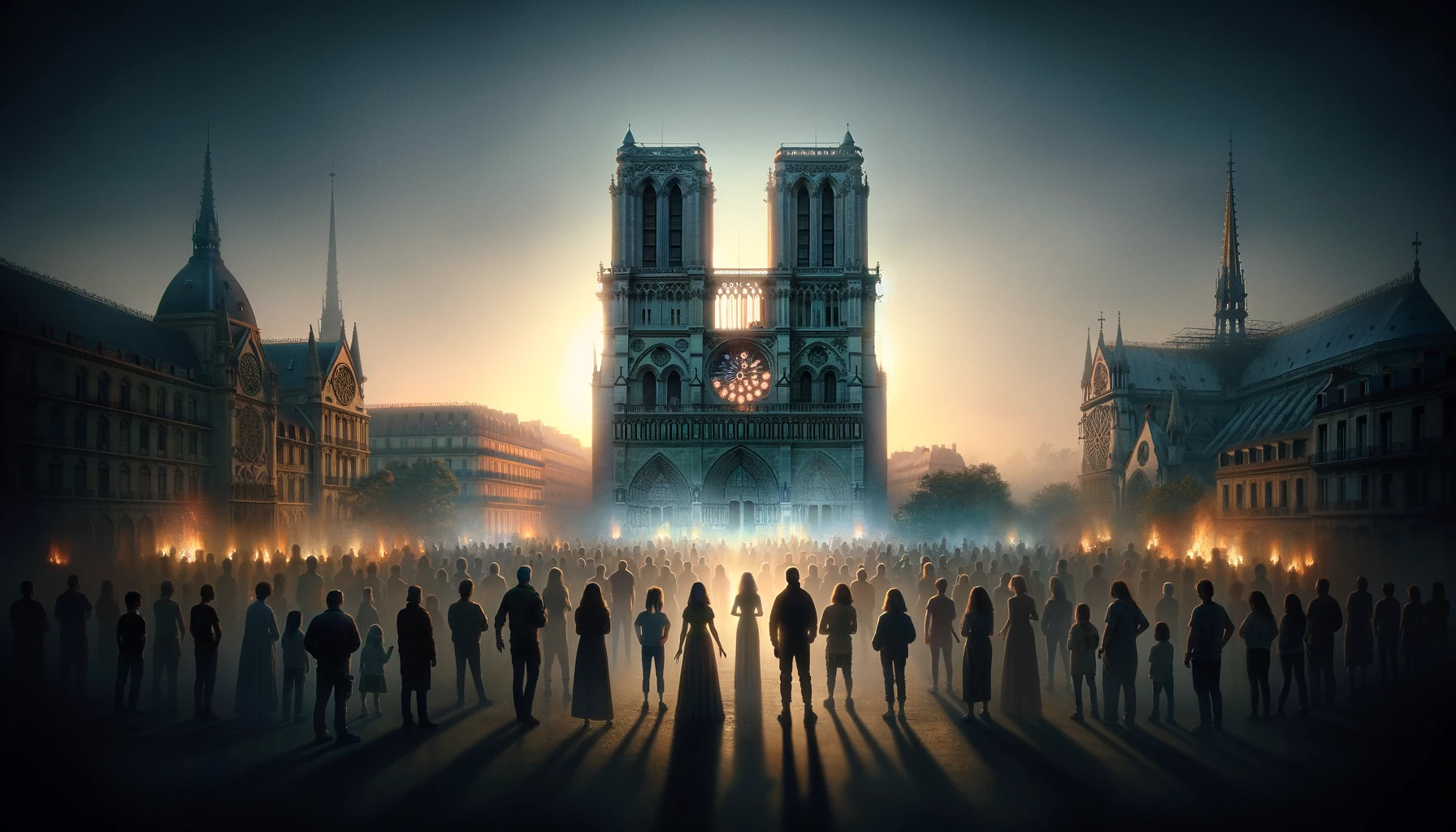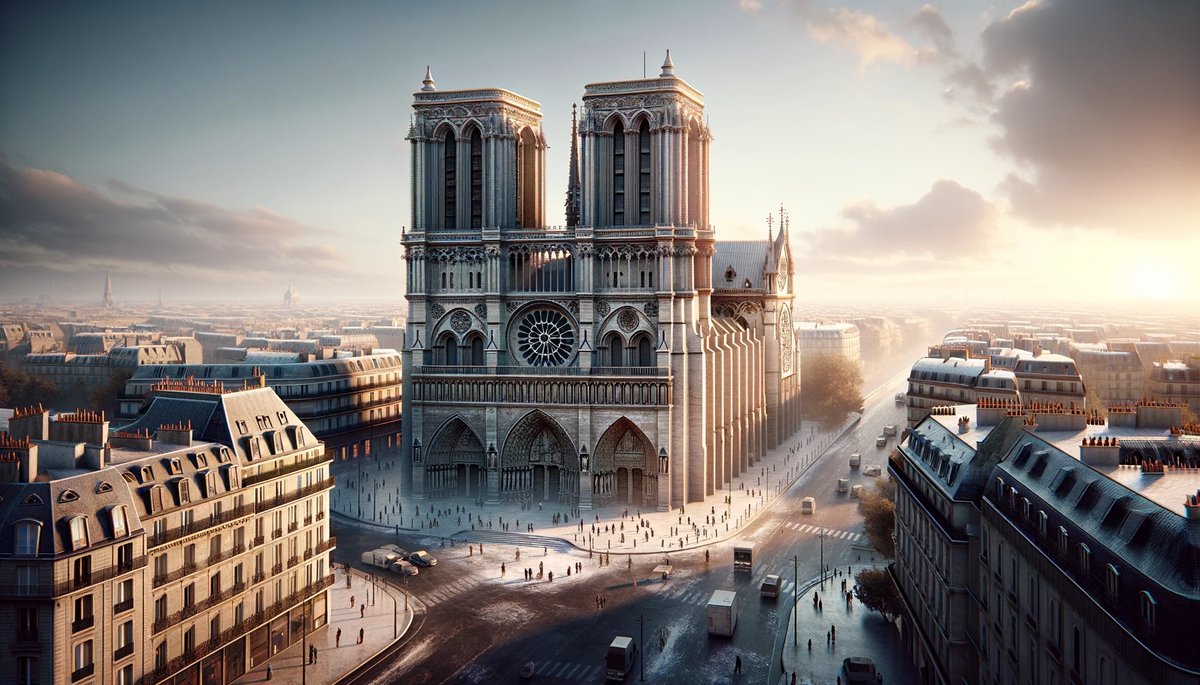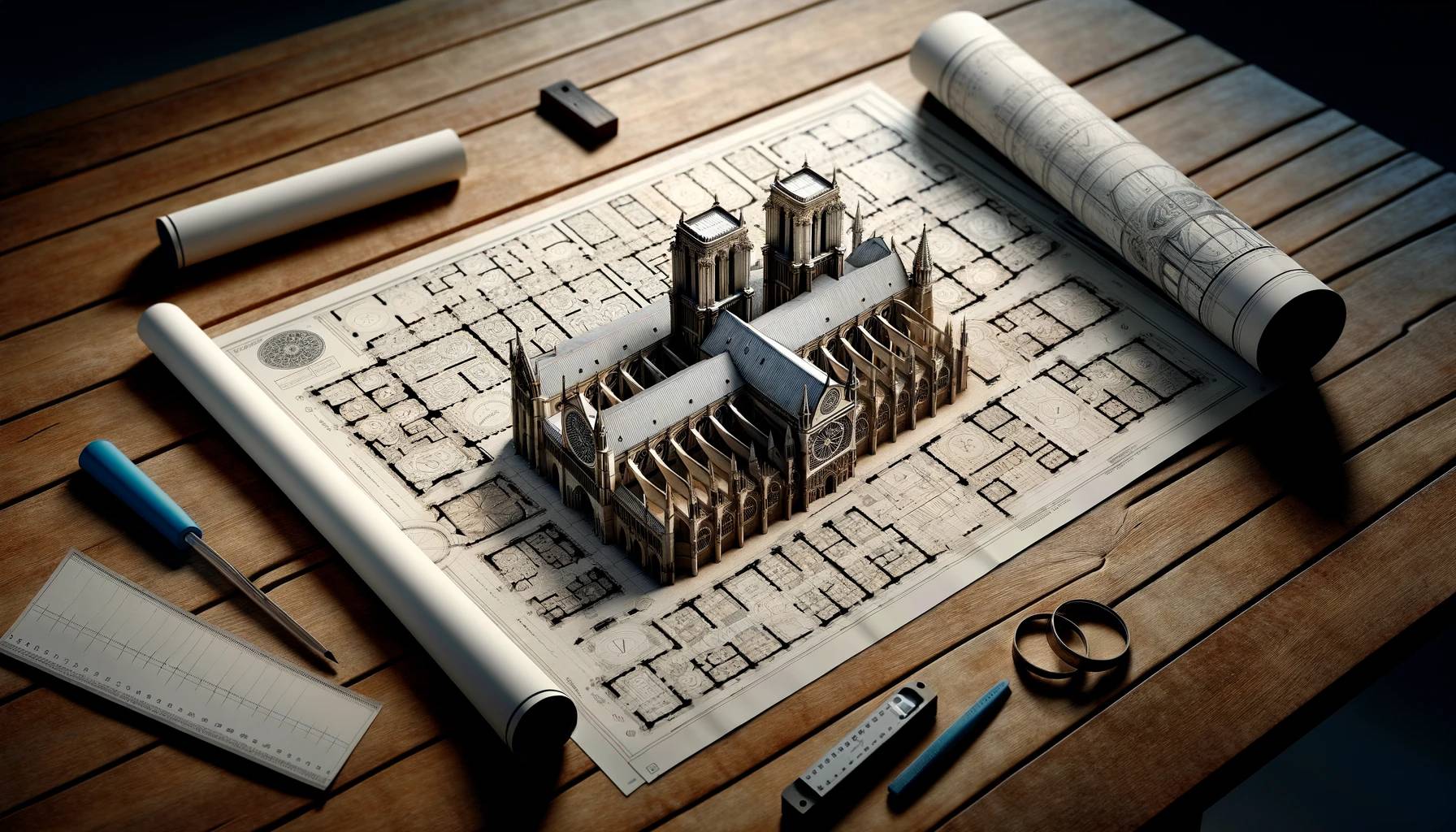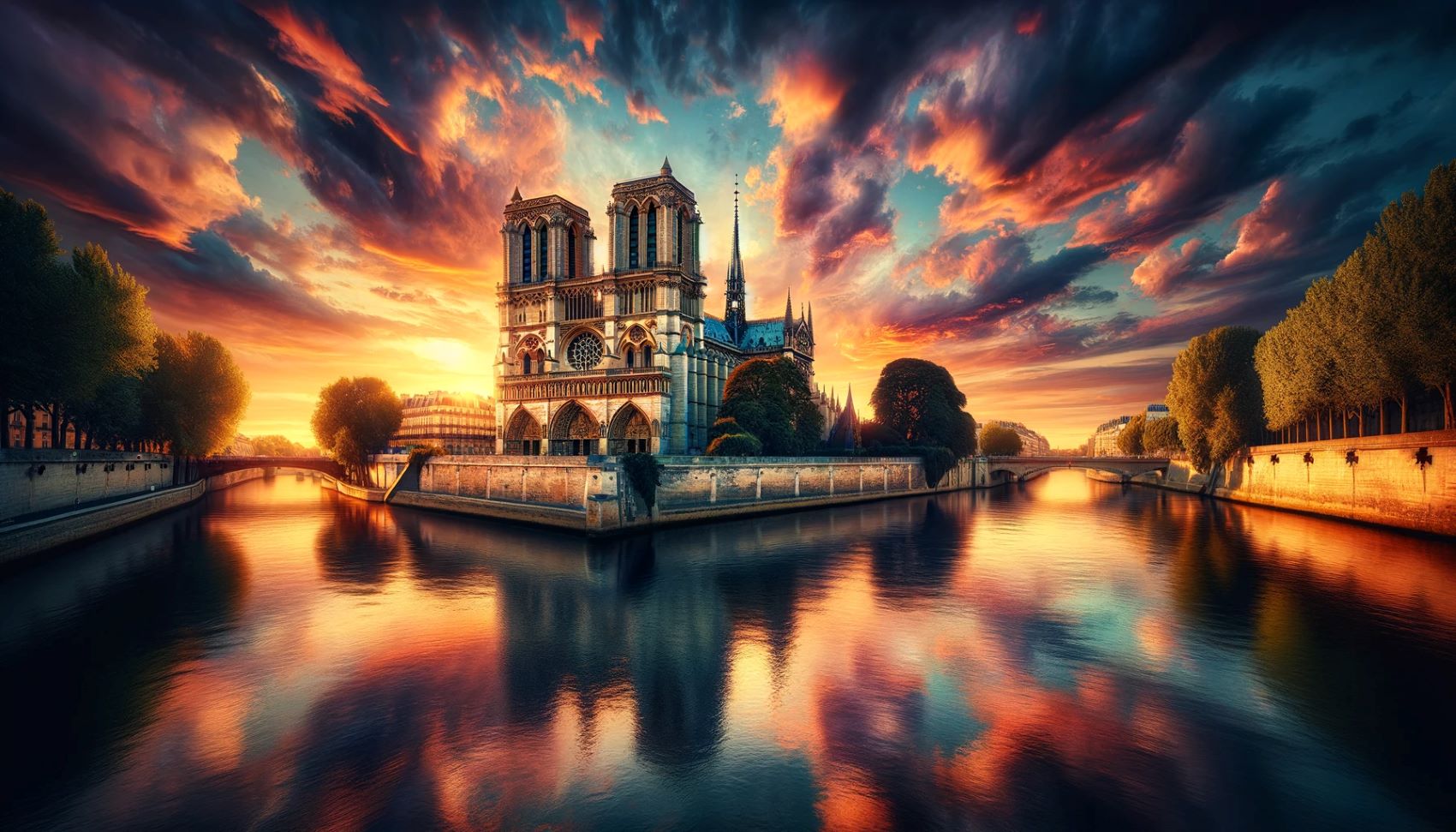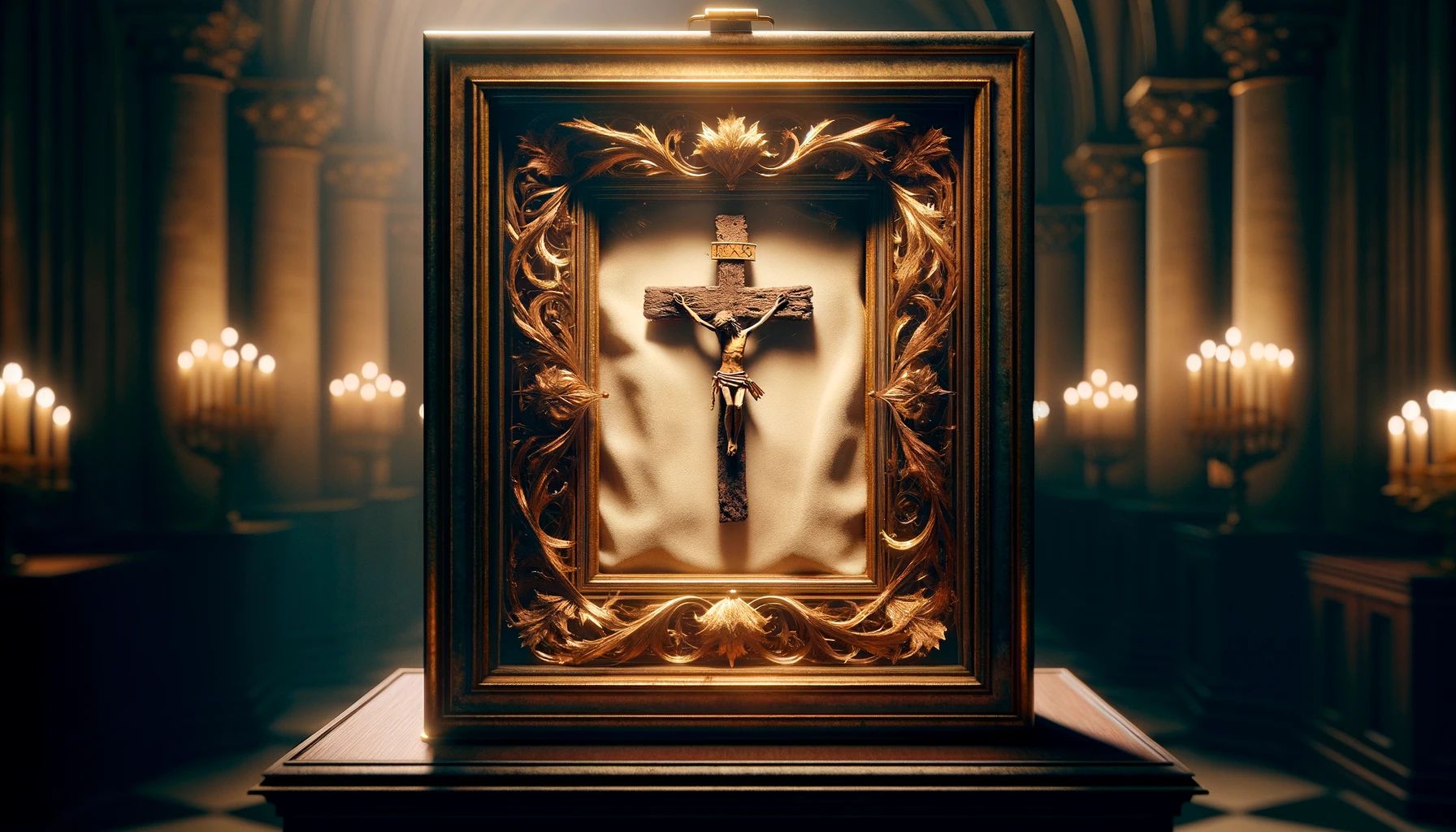Home>Arts and Culture>What Artwork Was Stored In The Notre Dame Cathedral
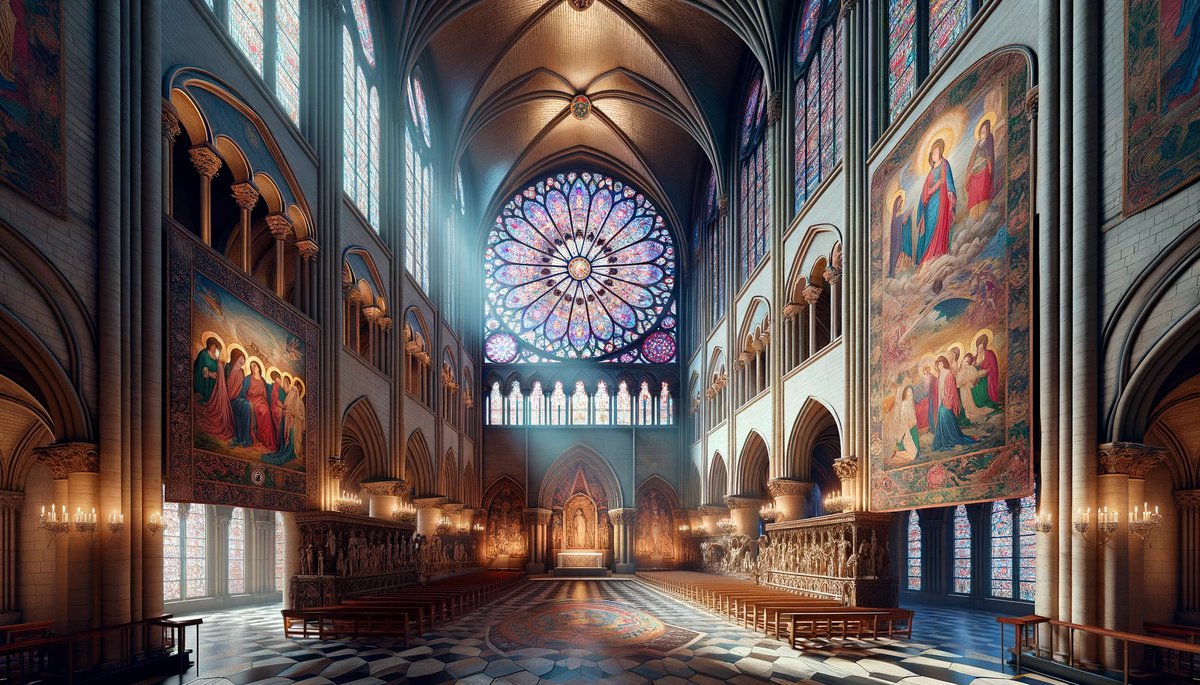

Arts and Culture
What Artwork Was Stored In The Notre Dame Cathedral
Published: February 16, 2024
Ericka Andersen, an editor at Christian.net, expertly merges digital strategy with content creation, focusing on faith and societal issues. Her communication skills enhance the platform's engaging narratives, fostering meaningful dialogue on belief's impact on society.
Discover the historic artwork stored in the Notre Dame Cathedral, showcasing the rich arts and culture heritage of the iconic landmark. Explore the significance of these masterpieces and their impact on the cathedral's legacy.
(Many of the links in this article redirect to a specific reviewed product. Your purchase of these products through affiliate links helps to generate commission for Christian.net, at no extra cost. Learn more)
Table of Contents
Introduction
The Notre Dame Cathedral, a timeless symbol of Paris, has long been revered for its stunning architecture, rich history, and the priceless artworks it housed. The cathedral, with its intricate Gothic design and imposing spire, stood as a testament to human ingenuity and artistic expression for over 850 years. However, on April 15, 2019, a devastating fire engulfed the iconic structure, causing significant damage to the cathedral and its precious contents.
The Notre Dame Cathedral, often referred to simply as Notre Dame, has been a cornerstone of Parisian culture and history since its construction began in 1163. Over the centuries, it has witnessed countless historical events and served as a source of inspiration for artists, writers, and visitors from around the world. The cathedral's significance extends far beyond its religious importance, as it has become a symbol of resilience, artistry, and the enduring spirit of humanity.
Within the walls of Notre Dame, a treasure trove of artwork and artifacts once resided, each piece contributing to the cathedral's cultural and historical significance. From stunning stained glass windows and intricately carved sculptures to priceless relics and religious artifacts, the cathedral's collection represented centuries of artistic achievement and spiritual devotion. The loss of these irreplaceable works of art would not only impact the cathedral itself but also the global community that cherished and admired them.
As the flames ravaged the cathedral, the world watched in disbelief, mourning the potential destruction of invaluable cultural heritage. The fire not only threatened the physical structure of Notre Dame but also posed a grave risk to the irreplaceable artworks housed within its walls. In the wake of this tragic event, efforts to assess the damage, recover surviving pieces, and embark on the monumental task of restoration began, igniting a renewed sense of determination to preserve the legacy of Notre Dame and its artistic treasures.
The fire at Notre Dame Cathedral serves as a poignant reminder of the fragility of our cultural heritage and the imperative to safeguard these treasures for future generations. As we delve into the history of the cathedral and the remarkable artworks it housed, we gain a deeper appreciation for the enduring impact of this iconic monument and the ongoing efforts to preserve its artistic legacy.
Read more: What Is Notre Dame Cathedral Made Of
History of the Notre Dame Cathedral
The history of the Notre Dame Cathedral is a captivating tapestry woven with the threads of architectural brilliance, religious significance, and cultural resonance. Construction of this magnificent edifice commenced in 1163 during the reign of King Louis VII and was completed in 1345. The cathedral's architectural style reflects the transition from the Romanesque to the Gothic period, showcasing the innovative techniques and artistic vision of its creators.
Notre Dame, which translates to "Our Lady," was dedicated to the Virgin Mary and quickly became a focal point of religious and civic life in Paris. Its soaring spires, intricate rose windows, and imposing facade exemplify the grandeur of French Gothic architecture, drawing pilgrims, scholars, and admirers from near and far.
Throughout the centuries, Notre Dame bore witness to a myriad of historical events, including the coronation of Napoleon Bonaparte and the beatification of Joan of Arc. Its significance extended beyond religious ceremonies, serving as a symbol of national unity and resilience during times of triumph and turmoil.
The cathedral's interior is adorned with a wealth of artistic treasures, including ornate sculptures, majestic altars, and awe-inspiring stained glass windows. Each element reflects the skill and devotion of the artisans who contributed to Notre Dame's splendor, enriching the spiritual experience of all who entered its hallowed halls.
Notre Dame Cathedral weathered periods of neglect and restoration, surviving the French Revolution and World Wars, each chapter adding to its storied legacy. Victor Hugo's timeless novel, "The Hunchback of Notre Dame," further immortalized the cathedral, sparking public interest in its preservation and inspiring a renewed appreciation for its architectural and cultural significance.
The enduring allure of Notre Dame transcends its religious function, captivating the imaginations of artists, writers, and visitors who are drawn to its timeless beauty and historical resonance. The cathedral stands as a testament to human creativity, perseverance, and the enduring power of art to transcend time and connect generations.
As we delve into the history of the Notre Dame Cathedral, we uncover a narrative that intertwines architectural innovation, religious devotion, and cultural prominence, underscoring its enduring impact on Parisian identity and global heritage.
Artwork and Treasures in the Notre Dame Cathedral
The Notre Dame Cathedral, a repository of artistic treasures and cultural heritage, housed a diverse array of priceless artworks and artifacts that reflected centuries of creative expression and spiritual devotion. Within its sacred confines, the cathedral safeguarded a wealth of masterpieces, each contributing to its historical and aesthetic significance.
One of the most renowned features of Notre Dame was its stunning collection of stained glass windows. These intricate works of art, dating back to the 13th century, depicted biblical narratives, saints, and symbolic motifs, illuminating the interior with a kaleidoscope of vibrant hues. The Rose Window, a crowning jewel of Gothic artistry, mesmerized visitors with its intricate tracery and radiant portrayal of religious iconography.
The cathedral's interior was adorned with an impressive array of sculptures and reliefs, showcasing the skill and artistry of medieval craftsmen. From the ornate portals adorned with biblical scenes to the majestic statues adorning the nave, each sculptural element conveyed a profound sense of reverence and artistic excellence.
Notre Dame also housed a treasury of religious relics and ceremonial objects, including chalices, reliquaries, and intricately crafted liturgical vessels. These sacred artifacts, meticulously crafted and adorned with precious metals and gemstones, underscored the cathedral's role as a center of religious worship and pilgrimage.
The grandeur of Notre Dame extended to its altars and chapels, each adorned with exquisite carvings, paintings, and decorative elements. The High Altar, a focal point of the cathedral's spiritual life, featured a resplendent ensemble of religious imagery and intricate detailing, serving as a testament to the devotion and artistic prowess of the craftsmen who contributed to its creation.
The cathedral's treasury also encompassed a rich collection of vestments, tapestries, and ceremonial garments, each imbued with historical and artistic significance. These textiles, meticulously woven and embroidered, adorned the clergy and enriched the visual tapestry of Notre Dame's religious ceremonies.
As a testament to the enduring legacy of Notre Dame, the cathedral's treasury encompassed a rich collection of vestments, tapestries, and ceremonial garments, each imbued with historical and artistic significance. These textiles, meticulously woven and embroidered, adorned the clergy and enriched the visual tapestry of Notre Dame's religious ceremonies.
The Notre Dame Cathedral, with its diverse and awe-inspiring collection of artworks and treasures, stood as a testament to the enduring power of artistic expression and spiritual devotion. Each piece within its hallowed walls bore witness to the ingenuity and creativity of generations past, enriching the cultural tapestry of Paris and captivating the hearts and minds of visitors from around the world.
The Impact of the Fire on the Artwork
The devastating fire that engulfed the Notre Dame Cathedral on April 15, 2019, had a profound impact on the priceless artworks and cultural treasures housed within its sacred walls. As the flames raged through the iconic structure, the artistic legacy of Notre Dame faced an unprecedented threat, prompting global concern for the preservation of these irreplaceable masterpieces.
The intense heat and billowing smoke posed an immediate risk to the cathedral's stained glass windows, some of which dated back to the 13th century. These exquisite works of art, renowned for their intricate designs and vibrant hues, faced the peril of shattering under the extreme temperatures, potentially erasing centuries of unparalleled craftsmanship and religious symbolism. The Rose Window, a crowning jewel of Gothic artistry, stood as a poignant symbol of the vulnerability of Notre Dame's stained glass, evoking a sense of urgency to protect these timeless treasures.
The fire also cast a shadow of uncertainty over the cathedral's sculptural elements, including the ornate portals and majestic statues that adorned its interior. The intense heat and structural instability threatened to compromise these intricate carvings and reliefs, which bore witness to the skill and artistry of medieval craftsmen. The prospect of losing these sculptural masterpieces, each imbued with historical and religious significance, underscored the gravity of the situation and the imperative to safeguard Notre Dame's artistic heritage.
Furthermore, the cathedral's treasury of religious relics, ceremonial objects, and liturgical vessels faced potential damage from the fire and its aftermath. These precious artifacts, meticulously crafted and adorned with precious metals and gemstones, represented centuries of devotion and spiritual reverence. The threat of destruction loomed over these sacred items, prompting a collective resolve to protect and preserve the tangible links to Notre Dame's religious and cultural legacy.
As the flames were extinguished and the extent of the damage became apparent, the global community rallied in solidarity to assess the impact on Notre Dame's artistic treasures and initiate efforts to recover and restore the surviving artworks. The fire had left an indelible mark on the cathedral's cultural legacy, underscoring the fragility of our shared heritage and the imperative to ensure the preservation of these priceless artworks for future generations.
The impact of the fire on the artwork housed within the Notre Dame Cathedral serves as a poignant reminder of the vulnerability of our cultural heritage and the collective responsibility to safeguard these treasures from the ravages of time and unforeseen calamities. The events of that fateful day ignited a renewed sense of determination to protect and preserve the artistic legacy of Notre Dame, underscoring the enduring significance of these masterpieces in the tapestry of human history and creativity.
Efforts to Restore and Recover the Artwork
In the wake of the devastating fire that engulfed the Notre Dame Cathedral, a monumental endeavor to restore and recover the surviving artwork and cultural treasures commenced, igniting a global outpouring of support and solidarity. The aftermath of the fire prompted an urgent and concerted response to assess the damage, salvage the remaining artifacts, and embark on the arduous journey of restoration.
The immediate aftermath of the fire saw a swift mobilization of experts, conservators, and cultural heritage professionals who worked tirelessly to evaluate the condition of the cathedral's artistic treasures. Teams of specialists meticulously cataloged and removed surviving artifacts, including fragments of stained glass, sculptures, and religious relics, with the utmost care and precision. Every recovered piece, no matter how fragmented, represented a glimmer of hope amid the devastation, underscoring the resilience of Notre Dame's artistic legacy.
Simultaneously, a global network of conservationists, art historians, and philanthropists rallied to offer their expertise and resources in support of Notre Dame's restoration. Their collective efforts transcended national borders, reflecting a shared commitment to preserving the cultural heritage embodied by the cathedral's artworks. The outpouring of generosity and expertise underscored the universal significance of Notre Dame and its enduring impact on the collective human experience.
As the salvaged artworks were carefully transported to secure facilities for assessment and conservation, a comprehensive strategy for the cathedral's restoration began to take shape. The meticulous process of cleaning, stabilizing, and reconstructing the damaged pieces required a delicate balance of traditional craftsmanship and cutting-edge conservation techniques. Each fragment of stained glass, sculptural element, and religious artifact became a focal point of meticulous attention, symbolizing the unwavering dedication to preserving Notre Dame's artistic legacy.
The restoration efforts also sparked a renewed dialogue on the intersection of tradition and innovation in the conservation of cultural heritage. Experts and artisans collaborated to integrate time-honored techniques with modern advancements, ensuring that the restored artworks would retain their historical authenticity while meeting contemporary conservation standards. This harmonious blend of old and new exemplified the reverence for Notre Dame's artistic legacy and the commitment to safeguarding it for future generations.
The restoration and recovery of the artwork from the Notre Dame Cathedral stand as a testament to the resilience of human creativity and the enduring power of cultural heritage. The collective efforts to preserve these priceless treasures underscore the profound impact of Notre Dame on the global community and reaffirm the imperative to protect and cherish our shared artistic legacy. As the restoration endeavors continue, they serve as a poignant reminder of the unyielding spirit that unites us in safeguarding the treasures that define and enrich our collective human experience.


